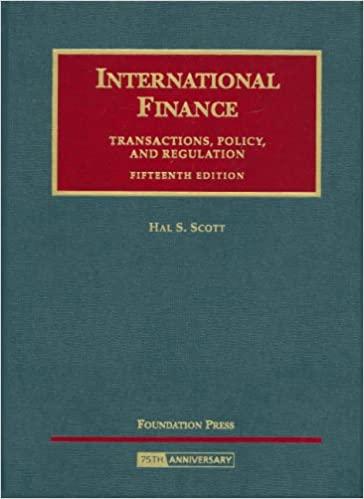Answered step by step
Verified Expert Solution
Question
1 Approved Answer
A project that costs $ 1 0 0 0 today is expected to have cash flows of $ 2 0 0 / year for 1
A project that costs $ today is expected to have cash flows of $year for years.
Under these projections, this is a positive NPV project: if your cost of capital is year investing $ today and earning $ per year for years yields an NPV of $you can verify this yourself, or take my word for it
However, those annual cash flows of $ are based on the following expectations:
A probability that business will be good and the project will earn $year and
a probability that business will be bad and the project will earn $year
Note that the expected annual cash flows will be: $ $ $year as stated above.
Unfortunately, you will not know which state of the world you will be in until you spend the $ and start the business; in year after the business opens, you will find out.
Obviously, if you open for business and business is good, you will want to stay open for the entire years; if your cost of capital is year the NPV of investing $ today and earning $year for years is $
And just as obviously, if you open for business and business is bad, you will want to shut down at the end of year instead of staying open until year ; your NPV of investing $ and earning $ per year for years is $
While this is indeed a positive NPV project overall, based on the above information, the probability that you will find out that business is bad is making you nervous to take this project.
As you are mulling this over, a competitor, who knows you are considering this investment, tells you that they will buy you out for $ at the end of year if you decide not to continue in the business. They may think they can run the business better than you; they may have a different projection of what the cash flows will be or have other reasons for making this offer.
This gives you what is called an "abandonment option": you will stay open if you find out that business is good, and you will sell to your competitor for $ at the end of year if business is bad.
Calculate the value of this abandonment option at t by following this step process:
Calculate the gain from abandonment. In this case, this will be the difference between the $ offer and the present value of earning $year for the remaining years of the project. This difference must be a positive number, otherwise you will reject the offer.
Multiply this gain by the probability of you being the situation of needing to abandon the project.
Since you make this decision at t discount this value back to t using your cost of capital.
What is the value of the abandonment option today at t
Step by Step Solution
There are 3 Steps involved in it
Step: 1

Get Instant Access to Expert-Tailored Solutions
See step-by-step solutions with expert insights and AI powered tools for academic success
Step: 2

Step: 3

Ace Your Homework with AI
Get the answers you need in no time with our AI-driven, step-by-step assistance
Get Started


